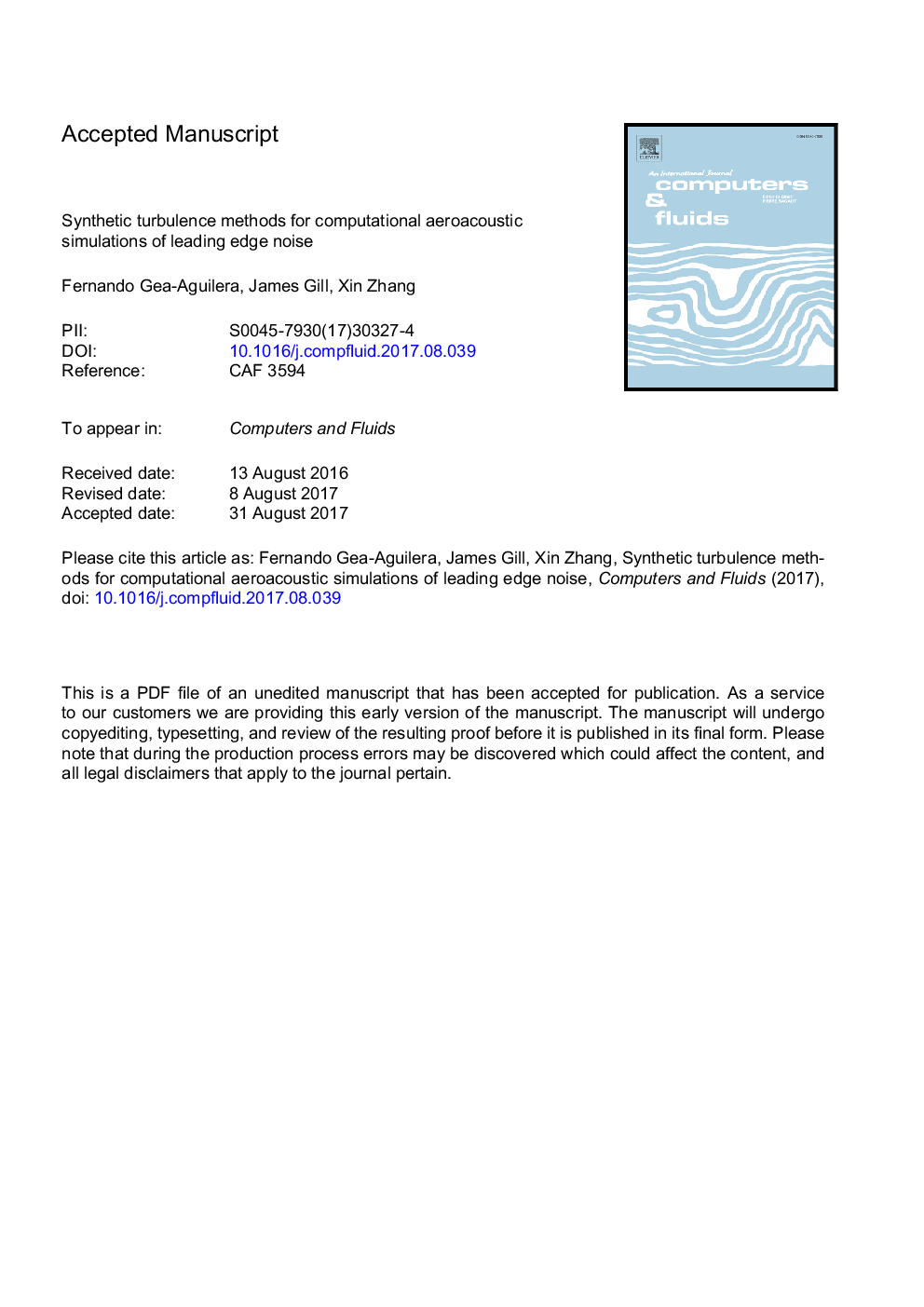| کد مقاله | کد نشریه | سال انتشار | مقاله انگلیسی | نسخه تمام متن |
|---|---|---|---|---|
| 5011693 | 1462654 | 2017 | 38 صفحه PDF | دانلود رایگان |
عنوان انگلیسی مقاله ISI
Synthetic turbulence methods for computational aeroacoustic simulations of leading edge noise
ترجمه فارسی عنوان
روش های آشفتگی مصنوعی برای شبیه سازی های هواشناختی محاسباتی از نویز لبه پیشانی
دانلود مقاله + سفارش ترجمه
دانلود مقاله ISI انگلیسی
رایگان برای ایرانیان
کلمات کلیدی
هواشناسی محاسباتی، آشفتگی مصنوعی، سر و صدای سرب،
موضوعات مرتبط
مهندسی و علوم پایه
سایر رشته های مهندسی
مکانیک محاسباتی
چکیده انگلیسی
A leading edge noise prediction methodology that uses an advanced digital filter method to generate synthetic turbulence is presented for efficient two- and three-dimensional simulations. The digital filter method combines the advantages of the Random Particle-Mesh method, for the mathematical background, and synthetic eddy methods, for the numerical implementation. This allows the generation of non-periodic turbulence without explicitly filtering white noise signals, and gives a significant reduction in the number of constraint parameters and random numbers involved in comparison with previous methods. A new eddy profile is defined through a superposition of Gaussian eddies that matches a target isotropic energy spectrum. The method is used in a linearised Euler equation solver to predict turbulence-aerofoil interaction noise from a number of configurations, including variations in aerofoil thickness, angle of attack and Mach number. A comparison with stochastic turbulence based on Fourier modes indicates that noise predictions are independent of the choice of synthetic turbulence method, provided that streamwise and transverse turbulent velocity components are included. Nevertheless, the advanced digital filter method is advantageous due to its reduced computational cost. This paper also extends the advanced digital filter method to realise a two-dimensional turbulent flow with the key statistics of three-dimensional turbulence, which is suitable to perform low-cost leading edge noise predictions that can be compared with experiments. Tests show that this approach is capable of reproducing experimental noise measurements to within an accuracy of 3âdB, and predicts similar noise levels to fully three-dimensional simulations.
ناشر
Database: Elsevier - ScienceDirect (ساینس دایرکت)
Journal: Computers & Fluids - Volume 157, 3 November 2017, Pages 240-252
Journal: Computers & Fluids - Volume 157, 3 November 2017, Pages 240-252
نویسندگان
Fernando Gea-Aguilera, James Gill, Xin Zhang,
